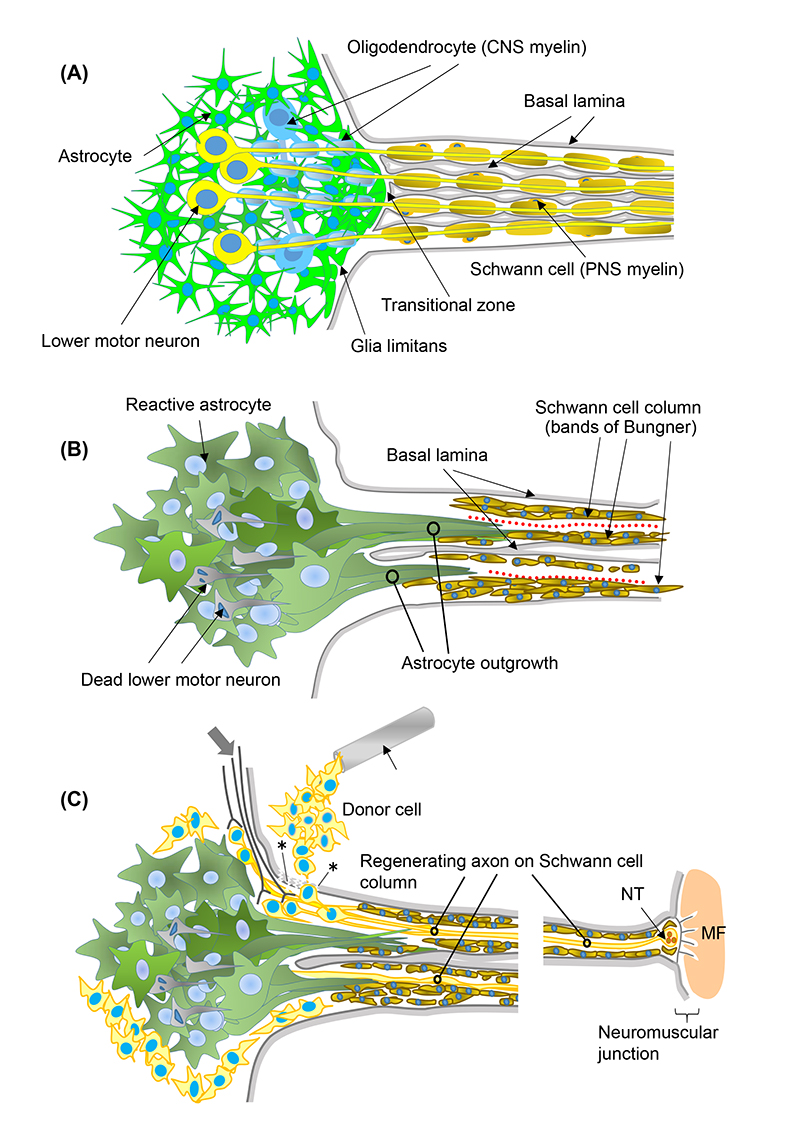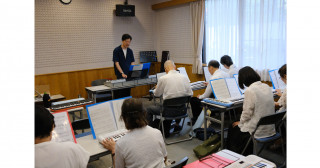Cell delivery method may also be applicable to other motor neuron diseases
A research team led by Tetsuji Sekiya of Kyoto University's Graduate School of Medicine proposes a new cell delivery method -- 'surface transplantation' -- for the treatment of amyotrophic lateral sclerosis (ALS).
Replacement of lost neurons with cell transplantation has long been studied as a treatment for neurodegenerative disorders such as spinal cord injury, Parkinson's disease, and ALS.
Numerous hurdles to full clinical application of such transplantation remain high, however. For instance, the glial scar -- induced after neuronal death in the central nervous system (CNS) -- has been believed to strongly inhibit regeneration.
Traditionally, intraparenchymal cell injection -- forced and direct infusion of donor cells into nerve tissue -- had been considered the best way to deliver cells to the host. Then in 2015, Sekiya and colleagues discovered that donor cells placed on the surface of a degenerated/gliotic auditory nerve autonomously migrated into it and repaired the auditory pathway, resulting in recovery of auditory function. Such function was not restored with injections.
The disadvantages of intraparenchymal injections are numerous, such as local inflammation, mechanical neural/vascular injures, and possible uncontrollable growth of donor cell mass. Moreover, it is difficult to estimate the optimal number of donor cells for delivery.
"These disadvantages could be avoided by using surface transplantation," explains Sekiya. "Interestingly, it was the glial scar that provided the necessary structural and biochemical cues for the donor cells transplanted onto the surface of the diseased nervous tissue."
In a paper appearing in Trends in Neurosciences , Sekiya's team proposes that surface transplantation may become a minimally invasive and promising technique for ALS treatment.
In ALS patients, the glial scar protrudes into the peripheral nerve -- the astrocyte outgrowth -- and connects with Schwann cells. Hence, donor cells transplanted onto the 'astrocyte outgrowth-Schwann cell' (AO-SC) complex can migrate and reach peripheral targets using the complex as a bridge.
Sekiya adds, "As AO-SC complexes are known to form in other motor neuron diseases and peripheral neuropathies, including spinal muscular atrophy, post-polio syndrome, and Guillain-Barré syndrome, they could also be good candidates for surface transplantation."

Schematic of healthy and damaged neurons and how surface transplantation can be a promising technique for ALS treatment (Kyoto University/Tetsuji Sekiya)
Paper information
【DOI】 https://doi.org/10.1016/j.tins.2018.03.008
Tetsuji Sekiya, Matthew C. Holley (2017). 'Surface Transplantation' for Nerve Injury and Repair: The Quest for Minimally Invasive Cell Delivery. Trends in Neurosciences, 41(7), 429-441.





